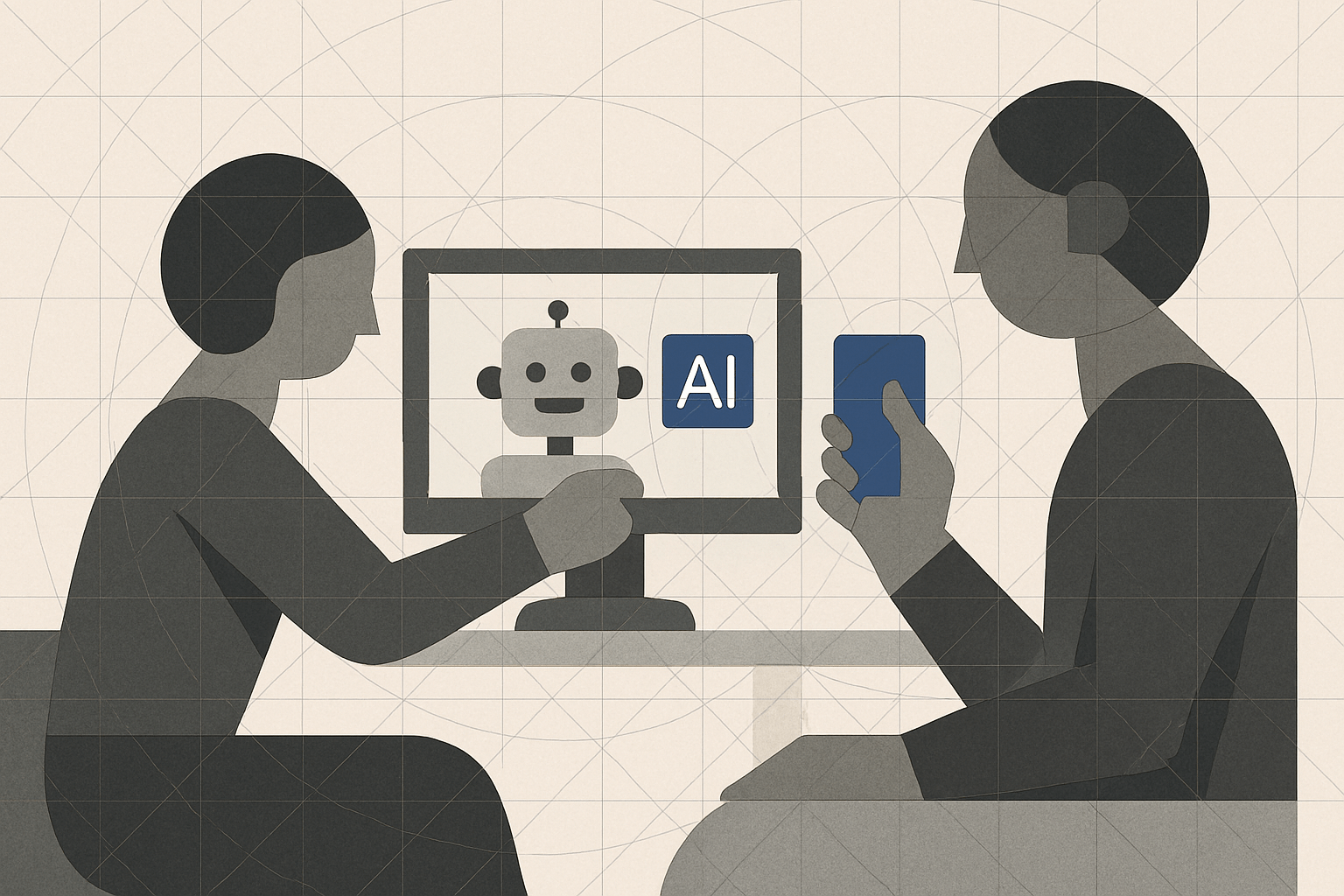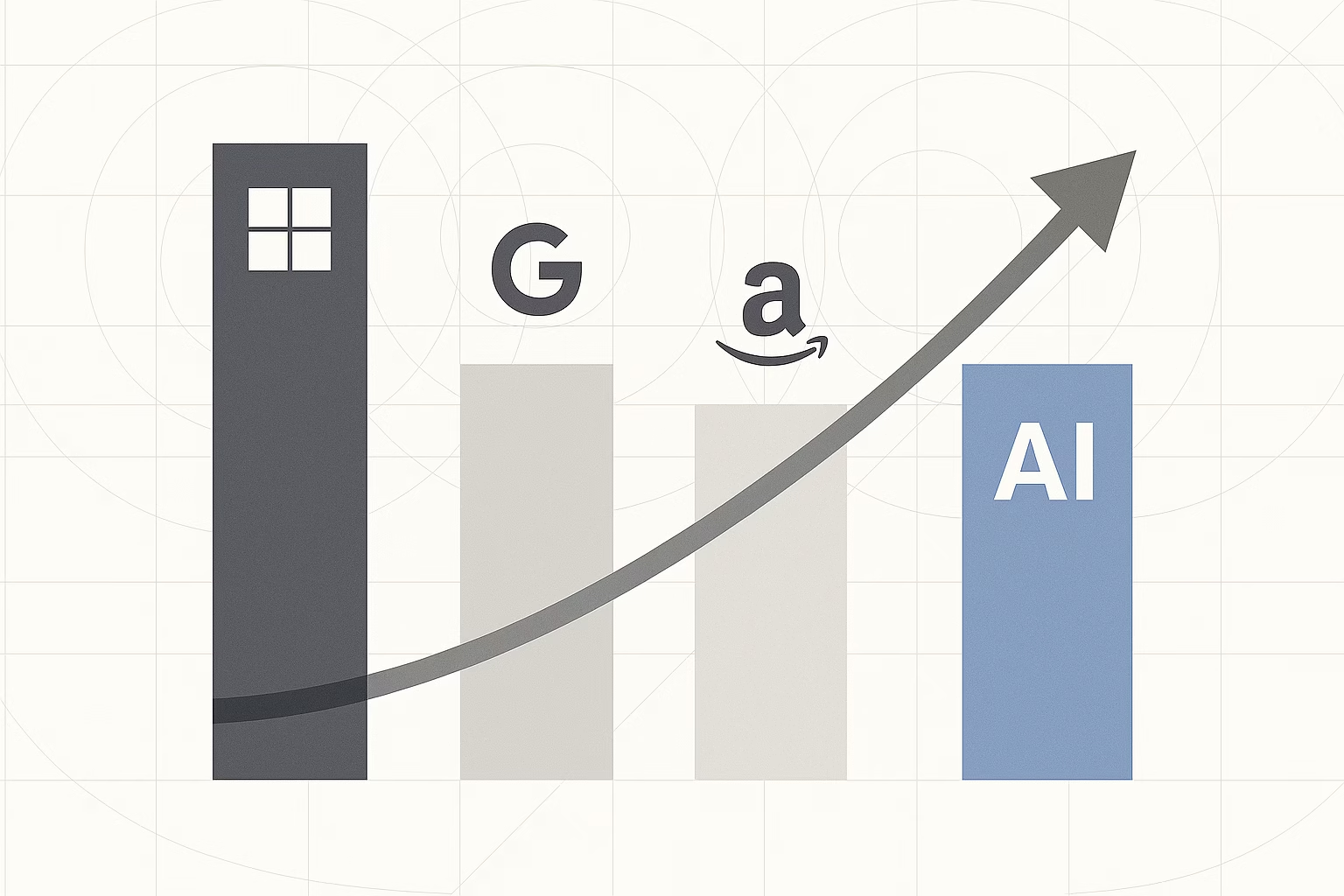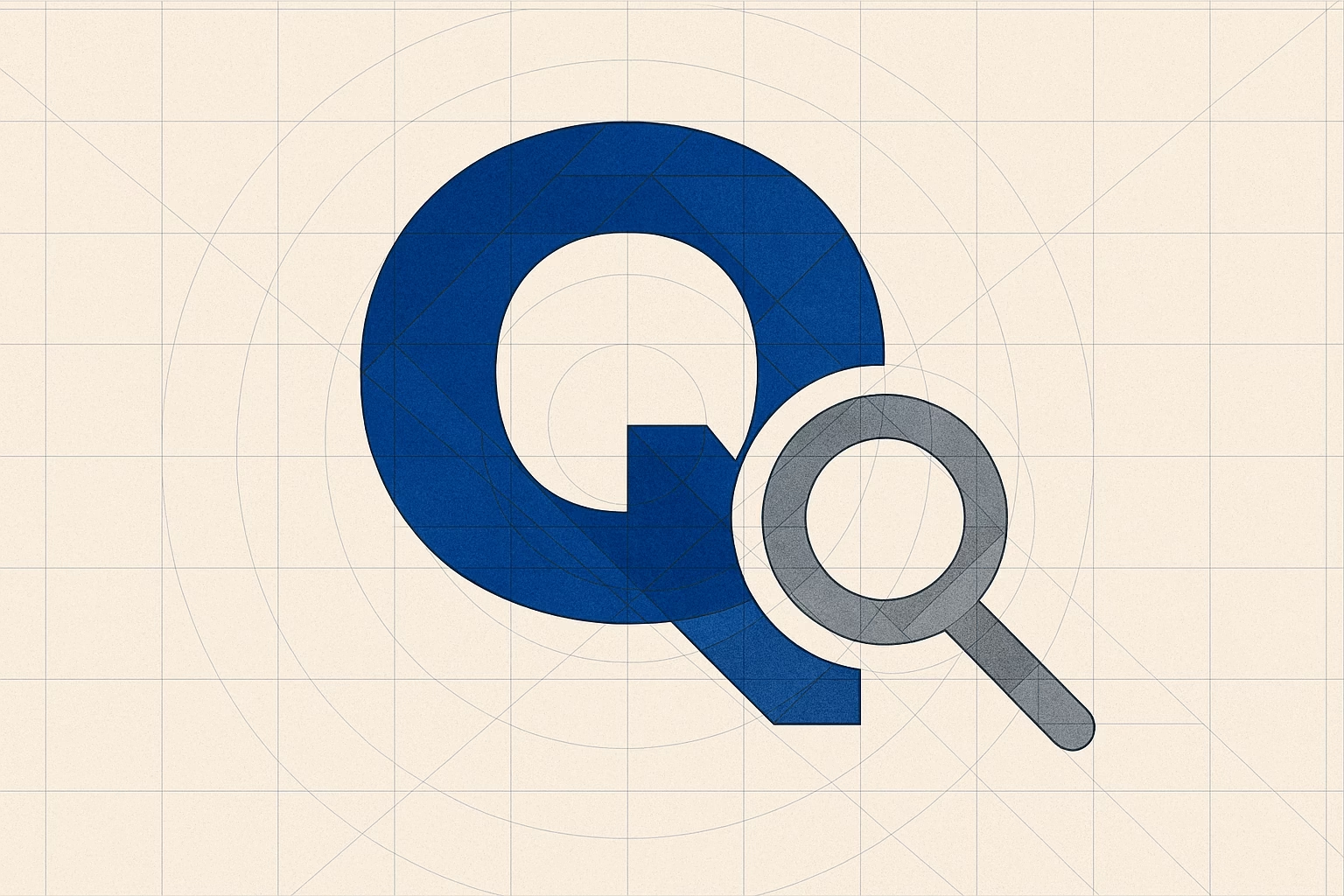The AI market landscape is shifting under our feet. Three giants: Google, Microsoft, and Amazon, stand poised to embed large language models into every corner of daily life. Their reach, infrastructure, and ability to subsidize services give them a massive advantage. Yet a fourth contender could still emerge. In this feature piece you will explore why the main three dominate, how free mass market adoption becomes the ultimate catalyst, and which companies might break through next.
Inside
- What gives the main three such unrivaled AI power and how their strategic reach maps onto your work
- The economics behind mass market AI adoption and why cost-free services win every time
- Key AI infrastructure challenges and how vertical integration becomes a lever for free offerings
- A deep look at potential candidates for the fourth AI contender and the playbooks they would need
- How you as a product designer or creative technologist can anticipate these shifts in your roadmap
Check out the Reality Check Podcast where Maia takes a deep dive into the best articles from the site. In this episode, she discusses the topics raised in this artcle.
The Power of Reach and Infrastructure in the AI Market
Every technology race turns on one simple factor: how many users you can serve, and how cheaply you can serve them. For AI, that breaks down into two interrelated domains: reach (the channels and touchpoints) and infrastructure (the servers, data centers, and custom silicon). Let us unpack why Google, Microsoft, and Amazon occupy positions of strength in both.
Google Search and the Infinity of Data

Google’s claim on the web is nearly absolute. Four billion searches per day feed its ad engine and inform its Gemini models. That constant feedback loop personalizes results and trains AI at scale. You type a query, Google learns in milliseconds, and serves answers that get sharper over time.
Google can lose money on a new product because its ad revenue offsets those costs. It even offers free storage and collaborative tools in Google Workspace to lock you into its ecosystem. As a designer, you know how critical that stickiness is. Google doesn’t need to recoup every penny from AI up front.
Microsoft Enterprise Stronghold

Microsoft has two secret weapons. First, Windows and Office sit on 1.5 billion devices worldwide. Embedding Copilot into Word or Outlook instantly reaches corporate knowledge workers. Second, Azure is the world’s second-largest cloud, powering AI workloads for startups and Fortune 500s alike.
Because Microsoft owns both the OS and the cloud, it can cross-subsidize AI features. You might get a free Copilot prompt in Teams today in exchange for data that improves the model tomorrow. The result is relentless adoption among enterprises with minimal additional friction.
Amazon’s Smart Home Dominion

Amazon alone bridges smart speakers, e-commerce, and massive cloud infrastructure. Over 200 million Alexa-enabled devices in homes across the globe gather voice data. AWS underpins Nike’s e-com site and Netflix’s content delivery. That scale drives down per-inference costs.
When Amazon rolls out a new Titan or Olympus model, it can include free tiers in AWS Marketplace or embed AI in Prime services. Imagine predictive shopping lists in Alexa without any extra fee, that’s the play. You as a creative technologist should be thinking about how voice and retail can fuse into daily utility.
Why Free Mass Market Adoption Will Decide the Winner
Simply building the best model is not enough. The victor in the AI race will be the one that embeds LLMs into life so deeply that they feel free. Think of social media platforms: they became ubiquitous when they offered zero-dollar sign-ups. AI follows the same rule.
The Economics of Free AI Services
Running large language models is expensive. Training can cost tens of millions of dollars. Serving inference to millions of users every day scales that cost further. Giants that own cloud infrastructure shave off a huge chunk of overhead.
Smaller players face a stark choice, charge users or burn through cash. Charging erects a barrier. Adoption slows. The free leader creates network effects and establishes a data advantage that compounds. In short, the cost war becomes a winner-takes-all contest.
Vertical Integration and Cross Subsidization
Take Apple’s rumored Siri overhaul. If AI lives on-device using Apple Silicon, Apple avoids cloud bills. Apple can bundle new features into iOS updates. No subscription needed. That vertical integration echoes Amazon’s device‐to‐cloud play and Microsoft’s OS-to-cloud play.
Cross subsidization means you pay the same or less for your core service while enjoying AI enhancements. Google Workspace users did not pay more when Google Lens and AI-powered summaries arrived. That stealthy value creation cements lock-in.
The User Experience Imperative
Free alone is not enough. The experience must be so seamless that you barely notice the AI. It must anticipate your needs, not just follow prompts. That requires embedding models into every workflow, email drafting, image editing, code reviews, home automation. Each micro-interaction trains the model further.

As a product designer you must ask how AI becomes a natural extension of your interface. How do you avoid the “evil AI overlord” tropes and instead make features feel like helpful companions? The answer often lies in subtle affordances rather than boxed chat windows.
Identifying the Fourth AI Contender
We have three giants armed for battle. Could there still be a fourth challenger with the reach ability and infrastructure to compete? Let us survey the field.
Apple: Privacy First Intelligence
Apple sits on 1.8 billion active devices. Its M-series chips deliver impressive on-device inference performance. Yet Apple has not released a flagship LLM. When it does, it can claim both privacy and zero incremental cost for users.
How Apple wins:
- Deploy an LLM integrated into iMessage, Keynote, and Photos
- Process prompts locally, alleviating cloud bills and privacy concerns
- Use its hardware advantage to bundle advanced AI without a subscription
Meta: Social Graph Intelligence
Meta’s social networks host 3 billion users. It already open-sourced LLaMA, fueling rapid improvements across academia and startups. Meta can embed AI into Reels, Messenger, and Horizon Worlds, generating engagement data that refines its models.
Meta’s pathway:
- Offer free AI-generated editing tools for short videos and images
- Build conversational agents in WhatsApp that learn from chat context
- Monetize via ads and commerce rather than user fees
TikTok (ByteDance): Algorithmic Engagement
TikTok’s recommendation engine is arguably the world’s most addictive AI. ByteDance could easily extend that prowess into text and voice generation. With over 1 billion monthly users, it can undercut competitors on cost per inference by using its own data centers.
TikTok’s play:
- Launch generative tools for creators, scriptwriting, music, voice transformation
- Embed AI into the “For You” feed to auto-summarize or remix content
- Subsidize compute through ads and creator monetization
Nvidia: The Infrastructure Incumbent
Nvidia may not own consumer apps, but it powers nearly every AI data center. It could leverage partnerships to create a developer-friendly AI platform with free tiers. By lowering the barrier to entry, it might foster a new wave of startups that challenge the current triumvirate.
Nvidia’s path:
- Offer GPU-accelerated AI inference credits via GeForce Now or cloud bundles
- Partner with platforms to embed “powered by Nvidia” AI features
- Cement its brand as the backbone of the AI revolution
Criteria for a True Contender
To break into the big leagues, a fourth radical will need:
- Distribution points in the hands of hundreds of millions
- Ownership or deep partnership in cloud or edge compute
- A strategy to absorb or eliminate inference costs for end users
- A domain differentiation that makes AI feel indispensable
Without those elements in place, any challenger faces an uphill battle against three trillion-dollar behemoths.
In Closing
We are watching an inflection point in AI. Google, Microsoft, and Amazon have woven themselves into the fabric of work, search, and home life. They can afford to give away AI at scale and still drive revenue through ads, subscriptions, and commerce. Free mass market adoption becomes the moat that locks out lesser-funded competitors.
Yet the story is far from over. Apple could reignite its hardware advantage with privacy-first AI. Meta could pour LLaMA and social graph data into creative tools. TikTok and Nvidia may surprise us by turning their unique assets into free, irresistible AI experiences.
Actionable next steps for you:
- Audit your product or workflow. Where could AI slide in unobtrusively and add value without a price tag?
- Monitor emerging SDKs and APIs from Apple, Meta, and even TikTok. Early integration bets could pay off if any of them launch a free AI push.
For deeper reading on the economics of AI infrastructure and competition dynamics, see:
https://www.marketingaiinstitute.com/blog/ai-chip-war-cloud
https://lumenalta.com/insights/understanding-the-cost-to-setup-an-ai-data-center-updated-2025
You may also be interested in:
The Shocking Truth: AI is Poised to Outconsume Every Nation in Energy, Water, and CO₂ Emissions
tl;dr
- Google, Microsoft, and Amazon dominate AI thanks to unmatched reach and infrastructure
- Free mass market adoption is the defining battleground, cost-free services win network effects
- Vertical integration and cross subsidization let these giants embed AI at no extra cost
- A true fourth contender needs device or cloud distribution in the hundreds of millions, plus a cost-absorbing strategy
- Watch Apple, Meta, TikTok, and Nvidia for surprise moves in free AI offerings; integrate early to stay ahead in your product designs





